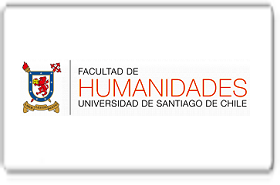Diagnóstico de laboratorio de enfermedades de transmisión transfusional en donantes de sangre.
DOI:
https://doi.org/10.56048/MQR20225.7.1.2023.975-994Palabras clave:
Donantes de sangre, Infecciones transmitidas por transfusión, Sífilis, VHB, VIHResumen
A pesar de que las transfusiones de sangre son intervenciones terapéuticas que salvan la vida de millones de personas cada año en todo el mundo, el acceso a sangre o hemocomponentes seguros sigue siendo un importante desafío, puesto que son una importante vía para transmitir enfermedades de transmisión transfusional (ETT); por lo cual, es de gran importancia garantizar la calidad de la sangre mediante la detección de marcadores de infección para ETT en el laboratorio clínico. El objetivo de este estudio fue analizar el diagnóstico de laboratorio de ETT en donantes de sangre. Se utilizó un diseño documental de tipo descriptivo. Los artículos fueron obtenidos de las bases de datos PubMed, Scielo y Dialnet; y de manera directa en Google para revistas ecuatorianas indexadas. Los resultados muestran que las ETT son más frecuentes en donantes con edad entre 18-30 años (55%) de sexo masculino (86,67%). El VIH (2,20%) y el VHB (4,70%) fueron más prevalentes en Camerún; el VHC (2,44%) en Pakistán; mientras que la sífilis (5,36%) y la enfermedad de Chagas (2,35%) en Paraguay. Dentro de las pruebas de laboratorio, la prueba de ELISA con 60%, fue la más común en el diagnóstico de las ETT en bancos de sangre. En la transfusión de la sangre y sus componentes hay que tener en consideración las diferentes pruebas o determinaciones de enfermedades que puedan afectar al receptor; por lo cual, es de gran importancia garantizar su calidad mediante la detección de marcadores de infección a través del diagnóstico de laboratorio.
Descargas
Métricas
Cited
DOI: 10.56048![]()
Citas
Alaei K, Sarwar M, Alaei A. (2018). The Urgency to Mitigate the Spread of Hepatitis C in Pakistan Through Blood Transfusion Reform. Int J Health Policy Manag, 7(3):207-209. doi: 10.15171/ijhpm.2017.120. PMID: 29524949; PMCID: PMC5890065.
Almugadam BS, Ibrahim OMA, Ahmed YMA. (2021). Seroprevalence of the Serological Markers of Transfusion-Transmissible Infections among Volunteer Blood Donors of Kosti Obstetrics and Gynecology Hospital. Medicines (Basel), 8(11):64. DOI: 10.3390/medicamentos8110064.
Ankouane F, Noah Noah D, Atangana MM, Kamgaing Simo R, Guekam PR, Biwolé Sida M. (2016) Seroprevalence of hepatitis B and C viruses, HIV-1/2 and syphilis among blood donors in the Yaoundé Central Hospital in the centre region of Cameroon. Transfus Clin Biol, 23(2):72-7. DOI: 10.1016/j.tracli.2015.11.008.
Arshad A, Borhany M, Anwar N, Naseer I, Ansari R, Boota S, Fatima N, Zaidi M, Shamsi T. (2016). Prevalence of transfusion transmissible infections in blood donors of Pakistan. BMC Hematol, 16:27. doi: 10.1186/s12878-016-0068-2. PMID: 27891232; PMCID: PMC5116208.
Baltodano-Ardon F, Pineda-Grillo IJ, Ruiz-Coello ME, López-Buñay KE. (2022). Seroprevalencia de marcadores para infecciones transmisibles en transfusiones de donantes en el banco de sangre Ecuador 2019-2020. Pol. Con, 7(5):443-456. DOI: 10.23857/pc.v7i5.3972.
Boushab BM, Mohamed Limame OCM, Fatim Zahra FM, Mamoudou S, Roseline Darnycka BM, Saliou SM. (2017). Estimation of seroprevalence of HIV, hepatitis B and C virus and syphilis among blood donors in the hospital of Aïoun, Mauritania. Pan Afr Med J, 28:118. DOI: 10.11604/pamj.2017.28.118.12465.
Busch MP, Bloch EM, Kleinman S. (2019). Prevention of transfusion-transmitted infections. Blood, 133(17):1854-1864. DOI: 10.1182/sangre-2018-11-833996.
Bwititi PT, Browne J. (2012). Seroprevalence of Trypanosoma cruzi in blood donors at the National Blood Transfusion Services - Guyana. West Indian Med J, 61(6):559-63. Disponible en: https://www.mona.uwi.edu/fms/wimj/system/files/article_pdfs/dr_bwititi.qxd_.pdf.
Cardona Arias JA, Flórez-Duque J. (2018). Prevalencia de Virus de la Hepatitis B y C y Factores Asociados en un Banco de Sangre de Medellín (Colombia) 2015-2016. Archivos de Medicina, 14(2):11. DOI: 10.3823/1393.
Chandra T, Rizvi SN, Agarwal D. (2014). Decreasing prevalence of transfusion transmitted infection in Indian scenario. ScientificWorldJournal, 2014:173939. DOI: 10.1155/2014/173939.
Chassé M, Tinmouth A, English SW, Acker JP, Wilson K, Knoll G, Shehata N, van Walraven C, Forster AJ, Ramsay T, McIntyre LA, Fergusson DA. (2016). Association of Blood Donor Age and Sex With Recipient Survival After Red Blood Cell Transfusion. JAMA Intern Med, 176(9):1307-14. doi: 10.1001/jamainternmed.2016.3324. PMID: 27398639.
Cruz, H. F., Moreno, J. E., Fonseca, A. A., Calderón-Serrano, C. Y., & Restrepo-Sierra, M. P. (2012). Aspectos motivacionales de donantes voluntarios de sangre en un móvil de recolección de la ciudad de Bogotá, Colombia. Rev. U.D.C.A Act. & Div. Cien, 15(1):19-26. Disponible en: https://revistas.udca.edu.co/index.php/ruadc/article/view/798/884. DOI: https://doi.org/10.31910/rudca.v15.n1.2012.798.
Daza N, Sánchez M, Vanegas T, Hernández I. (2016). Prevalencia de infecciones en donantes de sangre en la Universidad Industrial de Santander versus parques de la ciudad de Bucaramanga, 2014. MÉD.UIS, 23(3):55-60. DOI: http://dx.doi.org/10.18273/revmed.v29n3-2016006.
De La Rosa Illescas AF. (2022). Prevalencia de marcadores Serológicos Infecciosos Hemotransmisibles en donantes de sangre. Higía de la Salud, 6(1). Disponible en: https://revistas.itsup.edu.ec/index.php/Higia/article/view/700/1449.
Dodd, R., Crowder, L., Haynes, J., Notari, E., Stramer, S., & Steele, W. (2020). Screening Blood Donors for HIV, HCV, and HBV at the American Red Cross: 10-Year Trends in Prevalence, Incidence, and Residual Risk, 2007 to 2016. Transfus Med Rev, 34(2):81-93. doi: 10.1016/j.tmrv.2020.02.001. Epub 2020 Feb 18. PMID: 32178888.
Ehsan H, Wahab A, Shafqat MA, Sana MK, Khalid F, Abdullah SM, et al. (2020). A Systematic Review of Transfusion-Transmissible Infections Among Blood Donors and Associated Safety Challenges in Pakistan. J Blood Med, 11:405-420. DOI: 10.2147/JBM.S277541.
Escobar Amarilla MN, Montiel CR, Ortiz Galeano I. (2021). Serologías reactivas en donantes del Banco de Sangre del Hospital de Clínicas, Paraguay. Rev. virtual Soc. Parag. Med. Int, 8(1). Disponible en: https://doi.org/10.18004/rvspmi/2312-3893/2021.08.01.85.
Estigarribia G, Aguilar G, Méndez J, Ríos-González C, Ortiz A, Muñoz S. (2021). Prevalencia y factores de riesgo para sífilis en población indígena masculina de Paraguay, 2017. Salud Pública de México, 63(1). https://www.medigraphic.com/pdfs/salpubmex/sal-2021/sal211c.pdf.
Flórez-Duque J, Cardona-Arias JA. (2020). Infecciones en donantes de un banco de sangre de Medellín-Colombia, 2015-2016. Rev. Investigaciones Andina, 37(20). Disponible en: https://revia.areandina.edu.co/index.php/IA/article/view/988/1388.
Floyd S, Mulwa S, Magut F, Gourlay A, Mthiyane N, Kamire V, Osindo J, Otieno M, Chimbindi N, Ziraba A, Phillips-Howard P, Kwaro D, Shahmanesh M, Birdthistle I. (2022). DREAMS impact on HIV status knowledge and sexual risk among cohorts of young women in Kenya and South Africa. AIDS, 36(Suppl 1):S61-S73. doi: 10.1097/QAD.0000000000003157. PMID: 35766576.
Ganchozo Villavicente AE, Ruiz Jaramillo EA, Polo Bayas I, Dounet FF. (2022). Prevalencia y riesgo de enfermedades infecciosas en donantes y receptores de sangre en el Instituto Oncológico Dr.Juan Tanca Marengo. Oncología, 13(3-4). Disponible en: https://roe-solca.ec/index.php/johs/article/view/244.
García-Bermejoa I, De Ory F. (2017). Diagnóstico rápido en serología. Enfermedades Infecc. y Microbiol. Clin, 35(4):246-254. DOI: 10.1016/j.eimc.2016.12.013.
Guerrero-García, J., Zúñiga-Magaña, A., Barrera-De León, J., Magaña-Duarte, R., & Ortuño-Sahagún, D. (2021). Retrospective Study of the Seroprevalence of HIV, HCV, and HBV in Blood Donors at a Blood Bank of Western Mexico. Pathogens, 10(7):878. doi: 10.3390/pathogens10070878. PMID: 34358028; PMCID: PMC8308904.
Hashemi, E., Waheed, U., Saba, N., & Wazeer, A. (2022). First Report from Afghanistan on the Prevalence of Blood-Borne Infections: A Retrospective Cross-Sectional Multicentre Study for an Epidemiological Assessment. J Blood Med, 13:45-50. doi: 10.2147/JBM.S344180. PMID: 35027857; PMCID: PMC8752068.
Jaques, B., Saldanha, P., & Moraes, A. (2020). Profile of blood donations with a positive serology in Southern Brazil. Hematol Transfus Cell Ther, 42(2):129-133. doi: 10.1016/j.htct.2019.05.007. Epub 2019 Aug 12. PMID: 31439520; PMCID: PMC7248508.
Jary A, Dienta S, Leducq V, Le Hingrat Q, Cisse M, Diarra AB, et al. (2019). Seroprevalence and risk factors for HIV, HCV, HBV and syphilis among blood donors in Mali. BMC Infect Dis, 19(1):1064. DOI: 10.1186/s12879-019-4699-3.
Jenny HE, Saluja S, Sood R, Raykar N, Kataria R, Tongaonkar R, et al. (2017). Roy N. Access to safe blood in low-income and middle-income countries: lessons from India. BMJ Glob Health, 2(2):e000167. DOI: 10.1136/bmjgh-2016-000167.
Kamani L, Ahmad BS, Kalwar HA. (2020). Hepatitis-C Infection: Are we really committed to eliminate? Could it become the second Polio for Pakistan? Pak J Med Sci, 36(7):1742-1744. doi: 10.12669/pjms.36.7.2804. PMID: 33235608; PMCID: PMC7674893.
Karim F, Nasar A, Alam I, Alam I, Hassan S, Gul R, Ullah S, Rizwan M. (2016). Incidence of Active HCV infection amongst Blood Donors of Mardan District, Pakistan. Asian Pac J Cancer Prev, 17(1):235-8. doi: 10.7314/apjcp.2016.17.1.235. PMID: 26838216.
Kebede E, Getnet G, Enyew G, Gebretsadik D. (2020). Transfusion Transmissible Infections Among Voluntary Blood Donors at Dessie Blood Bank, Northeast Ethiopia: Cross-Sectional Study. Infect Drug Resist, 13:4569-4576. DOI: 10.2147/IDR.S287224.
Leguizamón R, Vega ME, Godoy G. (2013). Sífilis en gestantes y en recién nacidos. Rev. Nac. (Itauguá), 5(1):28-33. Disponible en: http://scielo.iics.una.py/scielo.php?script=sci_arttext&pid=S2072-81742013000100004.
Marquez Roa, N., Lemir de Zelada, M., & Molas, A. (2021). Frecuencia serológica de infección por Trypanosoma cruzi en donantes de sangre en el Paraguay entre los años 2006 y 2011. Memorias Del Instituto De Investigaciones En Ciencias De La Salud, 11(2). Disponible en: https://revistascientificas.una.py/index.php/RIIC/article/view/1756.
Mbanya D. (2013). Use of quality rapid diagnostic testing for safe blood transfusion in resource-limited settings. Clin Microbiol Infect, 19(5):416-21. DOI: 10.1111/1469-0691.12184.
Medina-Alfonso MI, Forero-Pulido SM, Suescún-Carrero SH. (2020). Prevalencia de marcadores serológicos en donantes de sangre de Boyacá, Colombia, 2014-2015. Rev Cubana Salud Pública, 46(1). Disponible en: https://www.scielosp.org/article/rcsp/2020.v46n1/e1415/#.
Meza Acosta G, Cerecetto Meyer H. (2019). Seroprevalencia de la enfermedad de Chagas en embarazadas del departamento de Cordillera en el período 2010-2016 y el comportamiento de la seroprevalencia después de 21 años de la implementación del Programa de Control Prenatal de Chagas. Inst. investigando Cienc. Salud, 17(3):10-19. Disponible en: http://scielo.iics.una.py/scielo.php?script=sci_arttext&pid=S1812-95282019000300010.
Ministerio de Salud Pública (MSP). (2018). Fortalecimiento del Ministerio de Salud Pública en el Sistema Nacional de Sangre. Disponible en: https://www.salud.gob.ec/fortalecimiento-del-ministerio-de-salud-publica-en-el-sistema-nacional-de-sangre/
Ministerio de Salud Pública y Bienestar Social del Paraguay. (2018). Reporte epidemiológico y programático de la sífilis. [Online]. Disponible en: https://www.mspbs.gov.py/dependencias/pronasida/adjunto/f36f1a-INFORMESIFILISPARAGUAY20180810191.pdf
Ministerio de Salud Pública y Bienestar Social del Paraguay. (2021) Paraguay refuerza la lucha contra la Enfermedad de Chagas con las primeras guías de manejo de la patología. [Online]. Disponible en: https://senepa.gov.py/2021/07/09/paraguay-refuerza-la-lucha-contra-la-enfermedad-de-chagas-con-las-primeras-guias-de-manejo-de-la-patologia/
Mohamed Z, Kim JU, Magesa A, Kasubi M, Feldman SF, Chevaliez S, et al. (2019). High prevalence and poor linkage to care of transfusion-transmitted infections among blood donors in Dar-es-Salaam, Tanzania. J Viral Hepat, 26(6):750-756. DOI: 10.1111/jvh.13073.
Mohammed, S., & Barton Essel, H. (2018). Motivational factors for blood donation, potential barriers, and knowledge about blood donation in first-time and repeat blood donors. BMC Hematology, 18:36. DOI: doi: 10.1186/s12878-018-0130-3. PMID: 30598827; PMCID: PMC6302390.
Mohd Hanafiah K, Groeger J, Flaxman AD, Wiersma ST. (2013). Global epidemiology of hepatitis C virus infection: new estimates of age-specific antibody to HCV seroprevalence. Hepatology, 57(4):1333-42. DOI: 10.1002/hep.26141.
Morales, J., Fuentes-Rivera, J., Delgado-Silva, C., & Matta-Solís, H. (2017). Marcadores de infección para hepatitis viral en donantes de sangre de un hospital nacional de Lima Metropolitana. Rev. perú. med. exp. salud publica, 34(3):466-471. doi: http://dx.doi.org/10.17843/rpmesp.2017.343.2503 .
Moya J, Julcamanyan E. (2014). Seroprevalencia de marcadores infecciosos causantes de pérdidas de hemodonaciones en el Servicio de Banco de Sangre del Hospital Nacional Docente Madre Niño San Bartolomé de enero 2008 a diciembre del 2013. Horiz Med, 14(4):6-14. Disponible en: http://www.scielo.org.pe/pdf/hm/v14n4/a02v14n4.pdf.
Moya-Salazar J, Díaz R, Pio-Dávila L. (2017). Depleción del suministro de sangre y costo por donaciones indeterminadas del Hospital Nacional Guillermo Almenara Irigoyen. Horizonte Médico, 17(1):31-37. Disponible en: https://www.redalyc.org/articulo.oa?id=371650379006.
Negash M, Ayalew M, Geremew D, Workineh M. (2019). Seroprevalence and associated risk factors for HIV, Hepatitis B and C among blood Donors in South Gondar District blood Bank, Northwest Ethiopia. BMC Infect Dis, 19(1):430. DOI: 10.1186/s12879-019-4051-y.
Noubiap JJ, Joko WY, Nansseu JR, Tene UG, Siaka C. (2013). Sero-epidemiology of human immunodeficiency virus, hepatitis B and C viruses, and syphilis infections among first-time blood donors in Edéa, Cameroon. Int J Infect Dis, 17(10):e832-7. DOI: 10.1016/j.ijid.2012.12.007.
Noubiap JJ, Nansseu JR, Ndoula ST, Bigna JJ, Jingi AM, Fokom-Domgue J. (2015). Prevalence, infectivity and correlates of hepatitis B virus infection among pregnant women in a rural district of the Far North Region of Cameroon. BMC Public Health, 15:454. DOI: 10.1186/s12889-015-1806-2.
Ochoa Azze RF. (2012) Técnicas inmunoenzimáticas para ensayos clínicos de vacunas y estudios inmunoepidemiológicos. La Habana: FINLAY EDICIONES.
Offergeld R, Ritter S, Hamouda O. (2012). HIV, HCV, HBV and syphilis surveillance among blood donors in Germany 2008-2010. Bundesgesundheitsblatt Gesundheitsforschung Gesundheitsschutz, 55(8):907-13. DOI: 10.1007/s00103-012-1516-1.
Omidkhoda A, Razi B, Arabkhazaeli A, Amini Kafi-Abad S. (2020). Trends and epidemiological analysis of hepatitis B virus, hepatitis C virus, human immunodeficiency virus, and human T-cell lymphotropic virus among Iranian blood donors: strategies for improving blood safety. BMC Infect Dis, 20(1):736. DOI: 10.1186/s12879-020-05405-9.
ONUSIDA. (2022). Últimas estadísticas sobre el estado de la epidemia de sida: Hoja informativa. Disponible en: https://www.unaids.org/es/resources/fact-sheet
Organización Mundial de la Salud (OMS). (2020). Disponibilidad y seguridad de la sangre a nivel mundial. Disponible en: https://www.who.int/es/news-room/fact-sheets/detail/blood-safety-and-availability.
Organización Mundial de la Salud (OMS). (2017). Global Status Report on Blood Safety and Availability. Génova. Disponible en: https://www.who.int/publications/i/item/9789240051683.
Organización Panamericana de la Salud (OPS). (2017). Suministro de sangre para transfusiones en los países de Latinoamérica y del Caribe, 2014 y 2015. Disponible en: https://iris.paho.org/bitstream/handle/10665.2/34082/9789275319581-spa.pdf?sequence=1&isAllowed=y.
Pathak S, Chandrashekhar M. (2013). Transfusion transmittable infections - Seroprevalence among blood donors in a tertiary care hospital of Delhi. Asian J Transfus Sci, 7(2):116-8. DOI: 10.4103/0973-6247.115566.
Rehman N, Orakzai MB, Hayat A, Azam S, Ahmad B, Khan I, Zeb Z. (2018). Prevalence of Hepatitis C virus and its risk factors in blood donors in district Peshawar. Pak J Pharm Sci, 31(1):83-87. PMID: 29348088.
Rodríguez-Leiva RR, Ríos-González CM. ([Internet]. 2020 [citado 2 agosto 2022]). Seroprevalencia de marcadores para infecciones transmisibles por transfusión en donantes de un hospital de referencia nacional de Paraguay, 2016. Mem. Inst. investigando Cienc. Salud, 18(1):61-68. DOI: https://doi.org/10.18004/mem.iics/1812-9528/2020.018.01.61-068.
Ruiz Mendoza L, Villegas Gracia R, Cardona Arias J. (2018). Prevalencia de agentes transmisibles por transfusión y factores asociados en un banco de sangre de Córdoba- Colombia 2014-2016. Rev. U.D.C.A Act. & Div. Cient [Internet], 21(2):297-308. Disponible en: https://revistas.udca.edu.co/index.php/ruadc/article/view/969. DOI: https://doi.org/10.31910/rudca.v21.n2.2018.969.
Samje, M., Fondoh, V., Nguefack-Tsague, G., Kamalieuk, L., Mbanya, D., Murphy, E., & et al. (2021). Trends in serological markers of transfusion transmissible infections in blood donations at the Bamenda Hospital-based Blood Service, Cameroon. Transfus Clin Biol, 28(3):228-233. doi: 10.1016/j.tracli.2021.05.011. Epub 2021 Jun 5. PMID: 34102320; PMCID: PMC8825896.
Sánchez Guio, T., Delgado Sevilla, D., Delcheva, B., & Barranco Obis, P. (2019). Perfil del donante de sangre en las Unidades Móviles del Banco de Sangre y Tejidos de Aragón. RECIEN, 17. DOI: https://doi.org/10.14198/recien.2019.17.04.
Sangrador-Deitos MV, Cruz-Hernández Á, González-Olvera JA, RodríguezHernández LA, Sánchez-Cárdenas CD, Torres-Salgado FG. (2020). Prevalencia de serología de enfermedades infecciosas en donadores de sangre durante 17 años en Guanajuato, México. Med Int Méx, 36(1):15-20. Disponible en: https://www.medigraphic.com/pdfs/medintmex/mim-2020/mim201c.pdf.
Sarkari B, Gadami F, Shafiei R, Motazedian MH, Sedaghat F, Kasraian L, Tavasoli AR, Zarnegar G, Nikmanesh Y, Davami MH. (2015). Seroprevalence of Leishmania infection among the healthy blood donors in kala-azar endemic areas of Iran. J Parasit Dis, 39(3):545-9. doi: 10.1007/s12639-013-0393-3. Epub 2013. PMID: 26345068; PMCID: PMC4554570.
Souan L, Siag M, Al-Salahat H, Al-Atrash T, Sughayer MA. (2021). Changing trends in seroprevalence rates of transfusion-transmitted diseases among blood donors in Jordan. BMC Infect Dis, 21(1):508. DOI: 10.1186/s12879-021-06196-3.
Steele WR, Dodd RY, Notari EP, Xu M, Nelson D, Kessler DA, et al. (2020). Prevalence of human immunodeficiency virus, hepatitis B virus, and hepatitis C virus in United States blood donations, 2015 to 2019: The Transfusion-Transmissible Infections Monitoring System (TTIMS). Transfusion, 60(10):2327-2339. DOI: 10.1111/trf.16005.
Suemnig A, Konerding U, Hron G, Lubenow N, Alpen U, Hoffmann W, Kohlmann T, Greinacher A. (2017). Motivational factors for blood donation in first-time donors and repeat donors: a cross-sectional study in West Pomerania. Transfus Med, 27(6):413-420. doi: 10.1111/tme.12450. Epub 2017. PMID: 28786224.
Tegegne AS, Zeru MA. (2022). Evaluation of the interventions on HIV case management and its association with cART adherence and disclosure of the disease status among HIV-positive adults under treatment. Sci Rep, 12(1):13729. DOI: 10.1038/s41598-022-17905-6.
Vallejo-Francis RA, Alonso-Gómez KD, Villamar-González FJ, Véliz-Castro TI. (2019). Etiología viral en unidades de sangre y su asociación a la capacidad de transmisión del virus dengue. Dom. Cien, 5(1):844-868. DOI: http://dx.doi.org/10.23857/dc.v5i1.1087.
Vizcaya Rodríguez, T. (2019). Prevalencia de infecciones transmisibles por transfusión en el sur del estado Lara, Venezuela. Kasmera, 47(1):50-58. Disponible en: https://www.redalyc.org/journal/3730/373061540009/html/.
Wang M, Yu SH, Han ZZ. (2021). The utility of grey zone testing in improving blood safety. Am J Transl Res, 13(8):9771-9777. Disponible en: https://www.ncbi.nlm.nih.gov/pmc/articles/PMC8430061/.
Wang W, Kong X, Zhao G, Huang X, Yuan J, Li N, et al. (2022). Seroprevalence of Transfusion Transmissible Infections and Associated Risk Factors in Hospitalized Patients before Transfusion in Jinling Hospital Nanjing University: A Three-Year Retrospective Study. Pathogens, 11(6):710. DOI: 10.3390/pathogens11060710.
Yambasu EE, Reid A, Owiti P, Manzi M, Murray MJS, Edwin AK. et al. (2018). Hidden dangers-prevalence of blood borne pathogens, hepatitis B, C, HIV and syphilis, among blood donors in Sierra Leone in 2016: opportunities for improvement: a retrospective, cross-sectional study. Pan Afr Med J, 30:44. DOI: 10.11604/pamj.2018.30.44.14663.
Yuan X, Sui G, Zhang D, Chen M, Zhao W. (2022). Recent developments and trends of automatic nucleic acid detection systems. J Biosaf Biosecur, 4(1):54-58. DOI: 10.1016/j.jobb.2022.02.001.
Publicado
Cómo citar
Número
Sección
Licencia
Derechos de autor 2022 MQRInvestigar

Esta obra está bajo una licencia internacional Creative Commons Atribución 4.0.
Los autores se comprometen a respetar la información académica de otros autores, y a ceder los derechos de autor a la Revista MQRInvestigar, para que el artículo pueda ser editado, publicado y distribuido. El contenido de los artículos científicos y de las publicaciones que aparecen en la revista es responsabilidad exclusiva de sus autores. La distribución de los artículos publicados se realiza bajo una licencia 
































































































